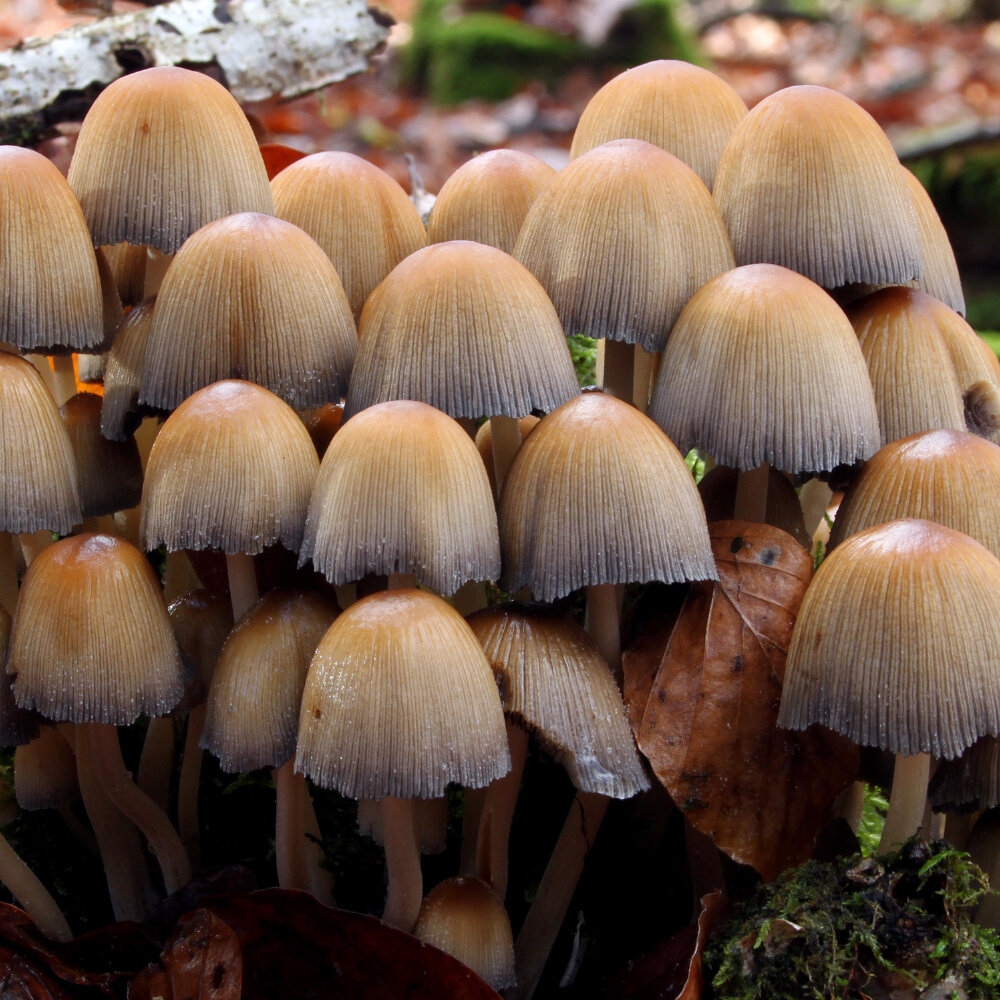
Coprinellus disseminatus
Also known as Coprinus disseminatus
FAIRY BONNET
Order: Agaricales, family Psathyrellaceae
CAP BELL SHAPED, DEEPLY PLEATED
Cap: 0.5-2 cm wide; bell-shaped to convex; buff with honey-brown center; deeply pleated nearly to center
GILLS BECOMING BLACK BUT NOT INKY
Gills: attached; wide-spaced; white to black, not inky
STALK WHITE, FRAGILE, WITH NO RING
Stalk: 1.5-4 cm long, .5 to 2 mm thick; hollow, smooth, fragile
SPORE PRINT BLACK
Spores: 6.5-19 x 4-6 µm, elliptical, smooth, apical pore
Coprinellus disseminatusEDIBILITY UNKNOWN, TOO FLIMSY TO MERIT EATING
GROWING ON CLUSTERS IN DECAYING WOOD; IN GRASSY AREAS
Usually near base of stumps, often in lawns.
LOOKALIKES
Browner, larger
Larger, flatter cap
Panaeolus species -- firmer caps, no pleats
YOU MIGHT ALSO LIKE TO KNOW...
Urban beauty-seekers spend far too much time viewing flower gardens. No one wants to trash the attraction of flower-bed pansies or recommend kicking flowers the way many people kick mushrooms, but isn't it worthwhile to appreciate the diversity of natural beauties in the city? Begin to broaden your vision by moving away from the flowers and finding the fairy bonnet mushroom in the cool grass.
It's not worth eating, but—much like its cousin the Japanese parasol—it's worth finding and appreciating.



